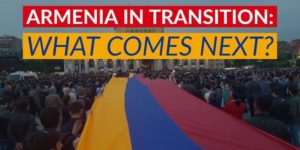Belarus and Armenia: How Russia handles uprisings | European Council on Foreign Relations https://t.co/2kDobRcDvK
— Democracy Digest (@demdigest) September 16, 2020
Top officials at the State Department have been shuttling back and forth from Europe, asserting a firm U.S. stance in response to two watershed political moments in Russia: the historic uprising in neighboring Belarus and the poisoning of Russia’s foremost opposition figure, The Washington Post reports (HT:FDD).
The Kremlin said Tuesday that a $1.5 billion loan it offered to Belarus carried no political conditions, despite claims by the Belarusian opposition that Russia was trying to shore up the nation’s authoritarian president amid post-election protests, Associated Press adds.

National Endowment for Democracy (NED)
With Armenia’s 2018 revolution, Russia accepted both a leadership transition enforced by public protests and a subsequent anti-corruption drive because Armenia’s new leader, Nikol Pashinyan, stayed close to Russia on foreign and security policy. Hence, some observers hoped that Moscow might show some flexibility in the ongoing protests in Belarus, note European Council on Foreign Relations analysts Gustav Gressel, Nicu Popescu and Andrew Wilson.
So, are there any parallels between Belarus and Armenia? they ask:
- Historically, both countries are less pluralistic and democratic than Georgia, Moldova, or Ukraine, all of which went through their own revolutions. Armenia and Belarus are characterised by strongman politics, security apparatuses tied to Russia, and oligopolistic economies with significant state-owned sectors and limited civil society – which ensure that power lies in the hands of a relatively limited number of political actors and interest groups. On paper, this should help Moscow or local elites navigate through protests.
- But Belarus is a personalised dictatorship, in which the regime has systematically repressed or exiled all nascent cells of opposition and independent power. Before 2020, Lukashenka did not even allow much by way of Russian puppet organisations (patriotic youth movements, political parties, newspapers, and civil society organisations such as those in Ukraine).
-

Globsec
Armenia was a defective democracy, where competition between political rivals was deferred and distorted, but nevertheless took place. The country has also gone through several phases of street protests in the last two decades. And its political forces have some experience with trying to channel street protests into political outcomes. The departure of the president would leave a much bigger power vacuum in Belarus than it did in Armenia.
Armenia’s Velvet Revolution was “an authentic democratic breakthrough, a historic opportunity to build a more just system. No event since Armenia acquired its independence in 1991 is of similar significance,” said Miriam Lanskoy, Senior Director for Eurasia with the National Endowment for Democracy.
Belarus provides a useful reminder that there is no illiberal or conservative anti-democratic tide to the east of the EU, they add. Quite the contrary. In the last two and a half years, Armenia and Belarus have gone through large-scale street protests driven by a desire for greater democracy, and voters in Ukraine and Moldova have voted against oligarchic rulers. For all the EU’s legitimate prudence over Belarus, democracy – and EU support for democracy in its eastern neighbourhood – is still in high demand. RTWT







